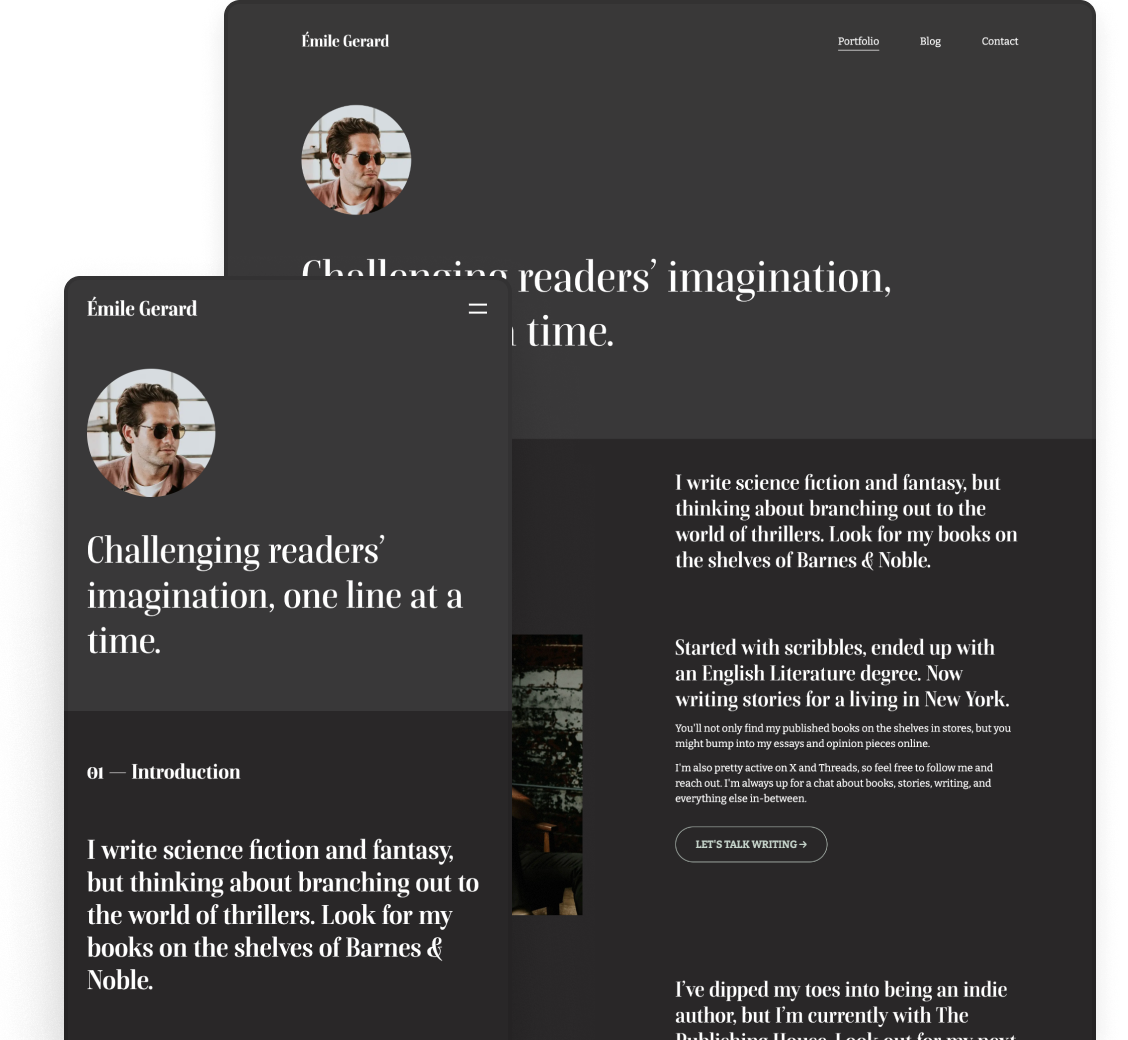The Ultimate Guide to Academic & Professional Creative Writing Portfolios
Building a creative writing portfolio that gets you accepted into your dream writing program is a challenge in itself. But did you know that when you graduate, you’ll have to throw everything you know about portfolios out the window and start the process all over again?
Whether you want to get into a great school to work on your craft, or you’re freshly out of school trying to land your first job, this guide has all you need to know.
We’ll review how to build a creative writing portfolio for a course or degree program and what career paths you can choose from once you graduate from it. Then we’ll show you how to create a professional creative writing portfolio and show you a tool that makes it super quick and easy.
Creative writing portfolio for college and university
Let’s go in chronological order. Before you go after a full-time writing job or try to land some freelance clients, you’ll probably want to study writing. It would be a little harder to become a writer without mastering the craft of writing, after all.
And when it comes to writing programs, whether it’s a creative writing course or a full-on degree program, most schools expect you to hand in a creative writing portfolio alongside your application.
Always check the guidelines
The very first thing you’ll have to do is checking the creative writing portfolio requirements that your desired program has. They tend to be very specific about the format, length, and contents of the material, so make sure you get it right. Let’s check some examples to see what you can expect when looking at these guidelines.
Creative writing portfolio requirement examples

Example for creative writing portfolio requirements
University of the Arts
When you apply to the Creative Writing program at the University of the Arts, you’ll have to submit a portfolio of your original writing and an essay that answers a creative writing prompt. They give the following requirements for these two:
- Portfolio: 10-15 pages in length, including at least two different pieces. It could be short stories, creative nonfiction, poetry, or excerpts from novels.
- Essay: 150-200 words in length with the topic of describing an important window.
University of Portsmouth - MA in Creative Writing
“We don’t prescribe an ideal portfolio,” they write at the requirements for this program. There are still some requirements that applicants have to follow though:
- Maximum 4,000 words in length
- No more than 3 pieces of writing
- Except for poetry-only submissions, there they recommend about 5 poems
- You have to write a short description of each piece
Apart from the portfolio, you’ll also need to submit a personal statement, talking about your ambitions and your writer’s journey so far.
Belhaven University - Creative Writing BFA Program
For applying to the Creative Writing program at Belhaven, you have to send your application via email with the following:
- Portfolio: Minimum 12-15 pages of creative writing (fiction, poetry, scripts, or creative nonfiction)
- Essay: 3-4 pages, discussing your history as a writer or reader OR explaining why you want to study creative writing
- A cover letter
Tips for your academic creative writing portfolio
Once you have the guidelines for your portfolio, it’s time to actually sit down and put it together.
Pick your writing pieces carefully
It goes without saying, but your choice of writing pieces will make or break your creative writing portfolio. Don’t be afraid to spend a longer time rereading your work and evaluating if the pieces hit the standard you want your portfolio to have.
It’s also a good idea to choose the ones you’d like to add, then put them aside, wait a few days, and assess them again. When you’ve been focusing on something for hours on end, it gets harder to see them clearly, so a little break can help a lot.
Once you’re done selecting them, double-check it with the requirements again and read through them one more time.
Get someone to review your portfolio
Another tip to make sure your portfolio is as good as it can get is to get someone to review it. It can be another writer or an avid reader who can evaluate your pieces from a literary point of view, or even just a friend or family member to check it for typos and other grammatical mistakes.
Similar to picking your pieces, when you wrote something and have read it a hundred times already, your mind will slip over typos naturally, knowing what you intended to write there. So giving yourself a break and getting someone to help can make sure there are no mistakes left in it when you hand it in.
Because as an applicant to a writing program, you really can’t afford to have typos and grammar mistakes in your creative writing portfolio.
What can you do with a creative writing degree?
When you’ve been obsessed with writing all your life, deciding to go for a creative writing program is a no-brainer. You’ll probably have the time of your life getting your degree too. But what happens when you graduate and actually have to figure out what you want to do for a living?
It might take a little more thinking than choosing your education, as you have many more options for a writing career, so it’s not as straightforward. We’ll quickly review the different career paths that are all open for you, once you graduate with a creative writing degree.
Publish books and become an author
Becoming a published author or poet is probably what most students with a creative writing portfolio dream of. It’s definitely a logical and super suitable direction, but unfortunately, it’s not as easy as one might expect. You’ll have to do a lot of pitches to get signed with a publishing house. Alternatively, you can set up a site using an author website template and publish books on your own.
Choose marketing or advertising, become a copywriter
A field that’s easier to get into for writers is marketing and advertising. More specifically, copywriting. Creative directors often emphasize how important it is for copywriters to master the craft of writing. So much so, that they would rather recommend taking a creative writing course than going to a portfolio school.
Copywriters can work freelance, in-house, or at agencies and they write advertising and/or marketing materials. It can be anything from slogans for advertising campaigns, TV and radio spots, copy for Facebook and Google ads, or even complete email marketing campaigns.
The career path in this profession is usually the following: junior copywriter, copywriter, senior copywriter, associate creative director, creative director, global creative director
Write long-form pieces as a journalist or magazine columnist
If selling products and services is not your thing, writing for newspapers or magazines could be another option for you. It probably won’t pay as much as a job in advertising, but you get to write longer pieces about topics you’re (ideally) interested in. And after all, no matter what happens, we’ll always need and want to read about what’s going on in the world.
Interested in this field? Read our tips for creating a journalism portfolio!
Get into content marketing and SEO
If you don’t mind that you won’t be exclusively writing all day every day, content marketing and SEO (a.k.a. search engine optimization) would be a great option for you. You’d still be writing, namely long-form articles and blog posts that are preceded by thorough keyword research.
With SEO comes a more technical side of the job, but that only balances out the work and makes your daily routine more versatile. Not to mention that you’ll always have data of how well your content does, so you can measure your performance effectively.
Make writing impeccable as an editor or proofreader
If you’re the kind of writer that loves reading and is bit of a perfectionist, you’d make an amazing editor or proofreader. Although these professions don’t need you to actually sit and write a ton, the job couldn’t be done if you didn’t know all the ins and outs of writing.
How to make a professional creative writing portfolio
Once you graduate and decide which way to go, you’ll need a portfolio to get started. Not the kind of standard “15-page-document” they asked you to write for school. Oh no, nobody wants to read through that now. Instead, you’ll need something that stands out, something that’s easy to browse through while showcasing your excellent writing skills.
The best format for your creative writing portfolio
The best format for your real-life, professional creative writing portfolio is actually a website. Realistically, whether you’re applying for a job or looking to land freelance clients, you’ll get in touch with them online.
So handing over your good old “book” won’t be an option. Just like presenting them with a lengthy document won’t be either. Why? Because it’s essentially a big wall of text that would be way too overwhelming to read through.
A website on the other hand is easy on the eyes, has lots of visuals, and organizes all the materials you want to present nicely.
The three main essentials you need to have on your website are an eye-catching home page, a well-written about page and separate pages for each of your writing projects, whether it is advertising copy, poetry, or a published book.
The heart of it all: the home page
Your home page will be the most important page of your website. This is where everybody lands at first and thus where they get their first impressions from. To have a great first impression, turn it into genuine interest, and make your visitors convert, your home page will have to check some boxes.
- What website are they looking at? Looking at the home page, visitors have to be clear about what website they landed on. They should know at least your name and what you do by just looking at the very first page.
- How do they find out more? You should have a navigation bar that makes it easy for people to find what they are looking for: your work, your about page, your contact information.
- Who are you actually? Although you have your about page to elaborate on that, it's best if they can find out a little bit about you right on your homepage. Adding a photo of yourself and a short bio will immediately help them make a more personal connection with you.
- Why should they keep on reading? Now they know who you are and what you do, but they still need a reason to spend their precious time on your site and keep on reading. Feature your most impressive projects on your homepage to prove the quality of your work right away.
Crafting the perfect about page
The about page is your place to shine: it gives you a perfect opportunity to introduce yourself more in detail and get creative with your writing. What would be a better way to flaunt your storytelling skills than telling your own, after all?
But if possible, make sure it’s still not just a big wall of text: try to break it up with images to make it easier to read and to illustrate what you’re writing about.
The about page is also a great place to feature your writer resume. Some writers like to link to it as a PDF, some embed it as a picture, while others simply have theirs typed there as part of the page.
Project pages for books, poetry, and beyond
The way your project page should be structured depends a lot on the type of project you’d like to add to your creative writing portfolio. But there’s still a general formula you can follow to introduce the “behind-the-scenes” of your writing:
- What was the task you had or the reason why you decided to write this piece?
- What was your creative process of writing the piece? Did you face any challenges while writing? And if so, how did you overcome them?
- What was the impact your piece had once published?
These are pretty general questions, but it’s exactly because of that that they can be applied to many different forms of creative writing.
It’s also expected to feature the finished result so that people can actually read your writing and evaluate your skills. When it comes to shorter pieces like poetry, feel free to publish the whole thing.
But for longer writing like novels, nobody expects you to publish it from start to finish in your portfolio. You can add an excerpt - or if it’s been published and has received positive feedback, you can feature some quotes on what people said about it.
Build your creative writing portfolio with Copyfolio
If you want to create a beautiful website that has everything we outlined above… and you don’t want to spend hours upon hours figuring out the technical side of it… Your best bet is using a website builder or portfolio builder tool that was designed specifically for writers.
Don’t worry about coding or design
The good thing about using a tool like Copyfolio is that you won’t have to worry about the technical side of things. Or whether you can design it to look good or not.
Having the templates, palettes and presets makes sure you can build the foundations of your site in just a few clicks. And it will look good, no matter what you add to it.
Create professional images in the editor, with a few clicks
You don't need to have Photoshop or any other design program to have images that'll wow your site's viewers. Place your image into a magazine, laptop, or TV with a single click and have a portfolio that looks like it was professionally designed.
Get help with writing about your projects
Apart from the daily portfolio tips that you’re going to get in email after signing up, you’ll also find tips and prompts in the website builder itself.
Built with insights from successful freelance writers, hiring managers, and creative directors, we’re guiding you through the process to help you create a portfolio that has exactly what people are looking for.
Sign up today and create a stunning creative writing portfolio for free, in a matter of minutes!
9 creative writing portfolio examples
Joanna Zhang
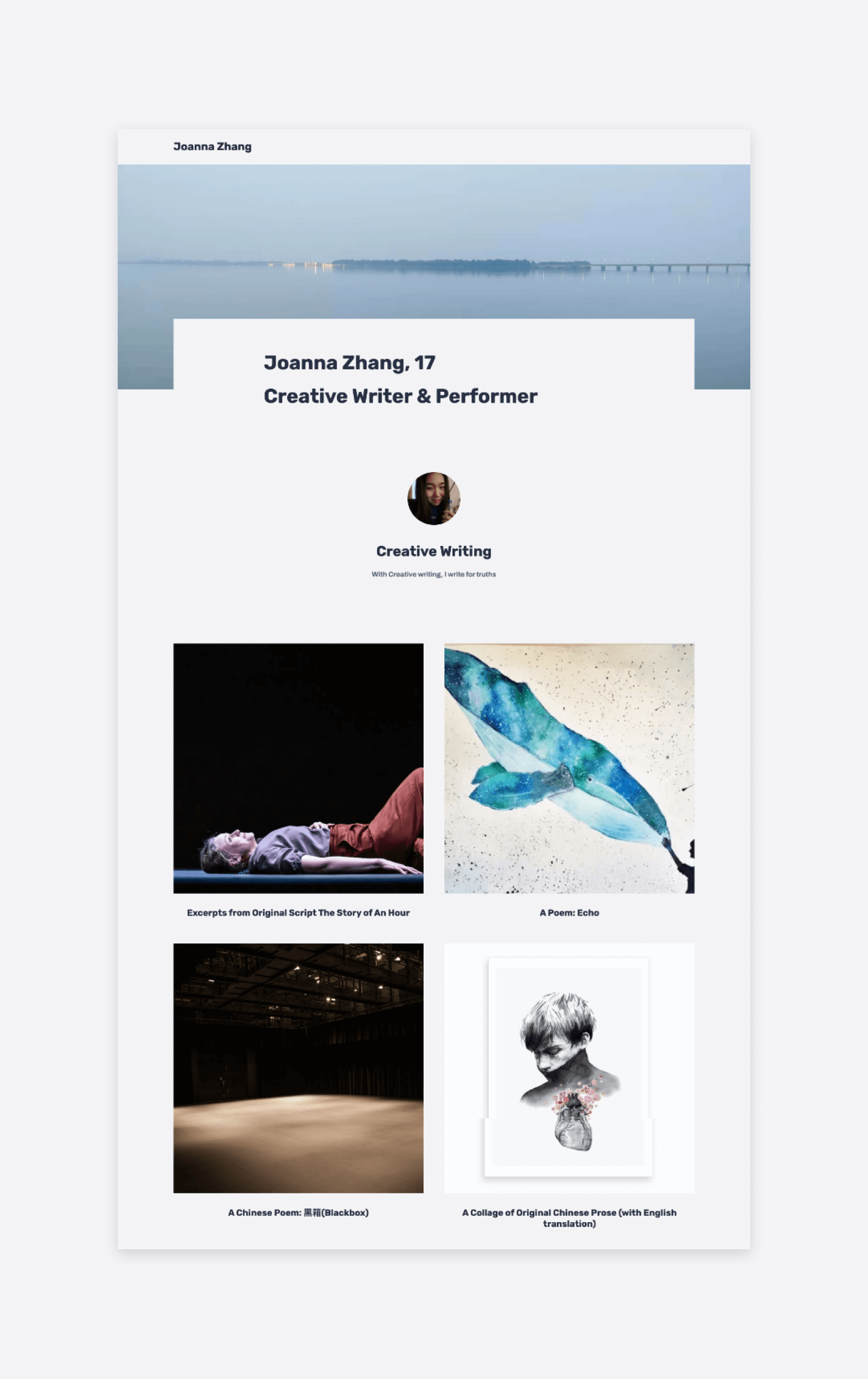
Joanna created her portfolio using Copyfolio
Eve L. Ewing
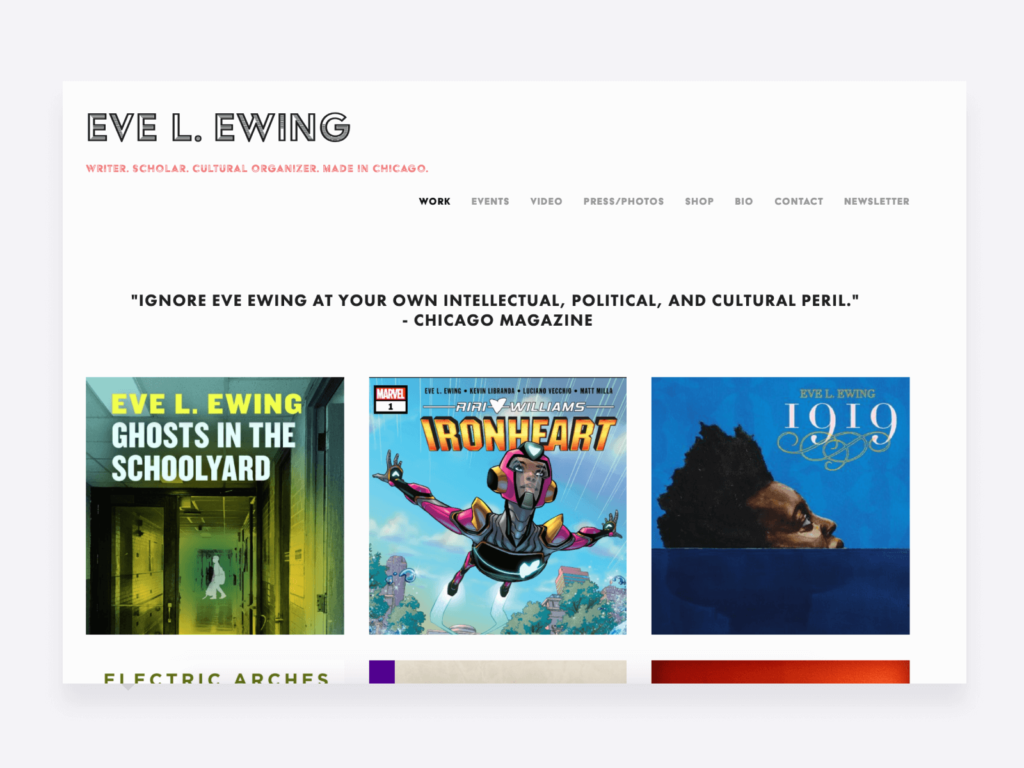
Safia Elhillo
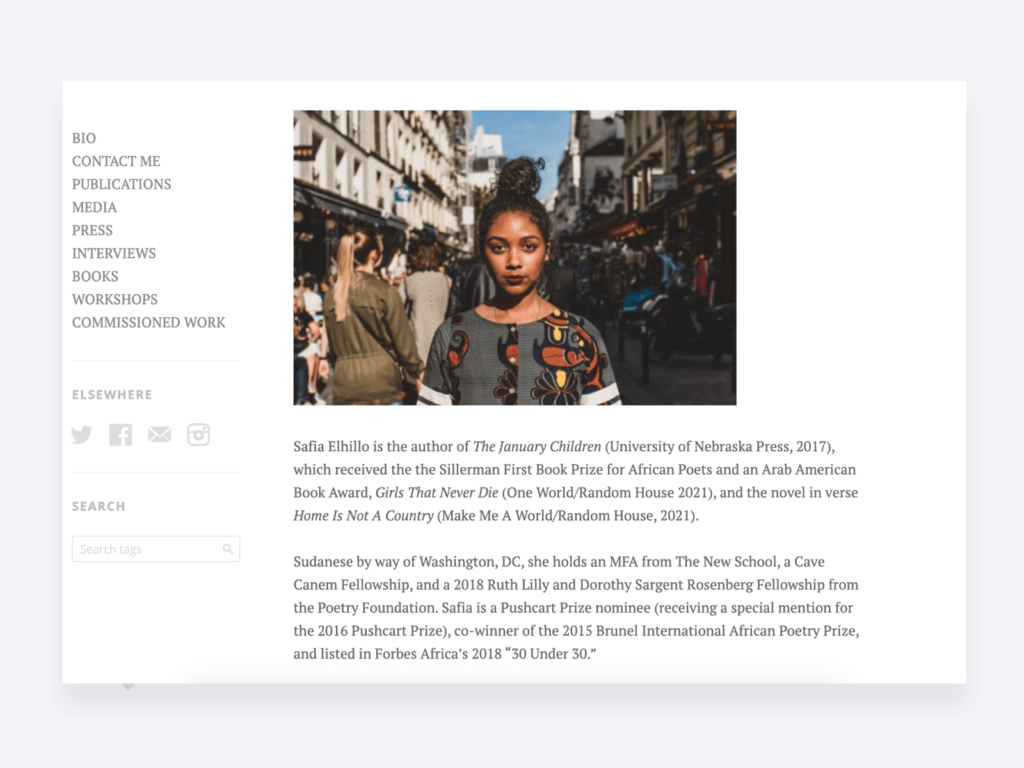
Tomi Adeymi
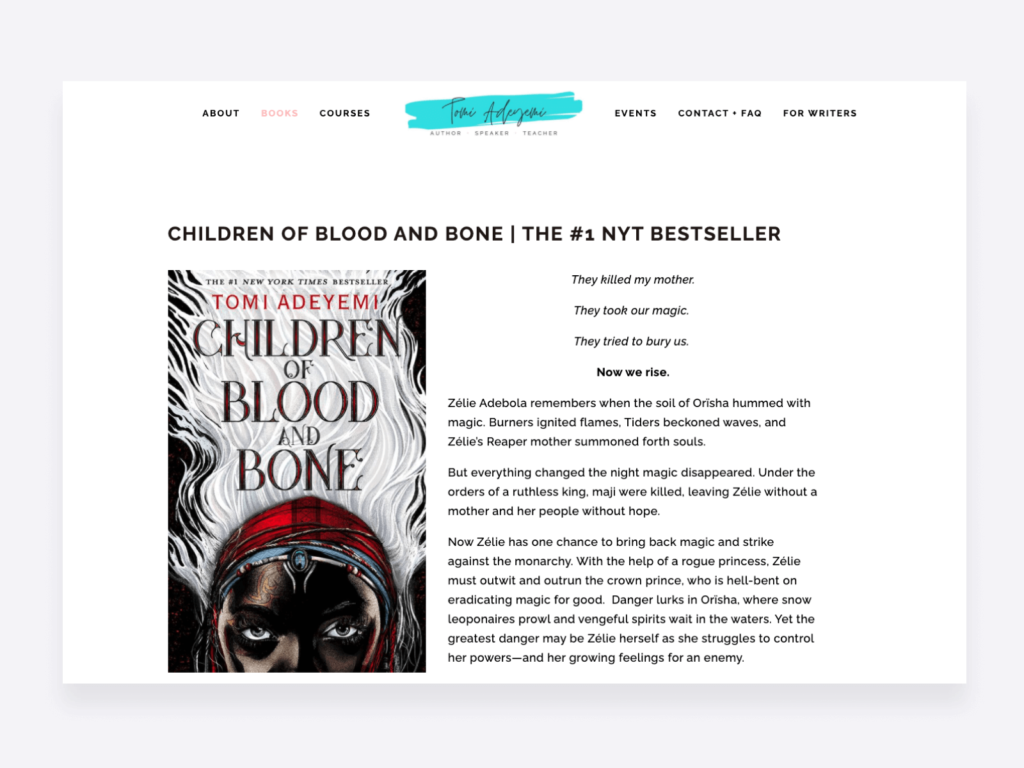
Ocean Vuong
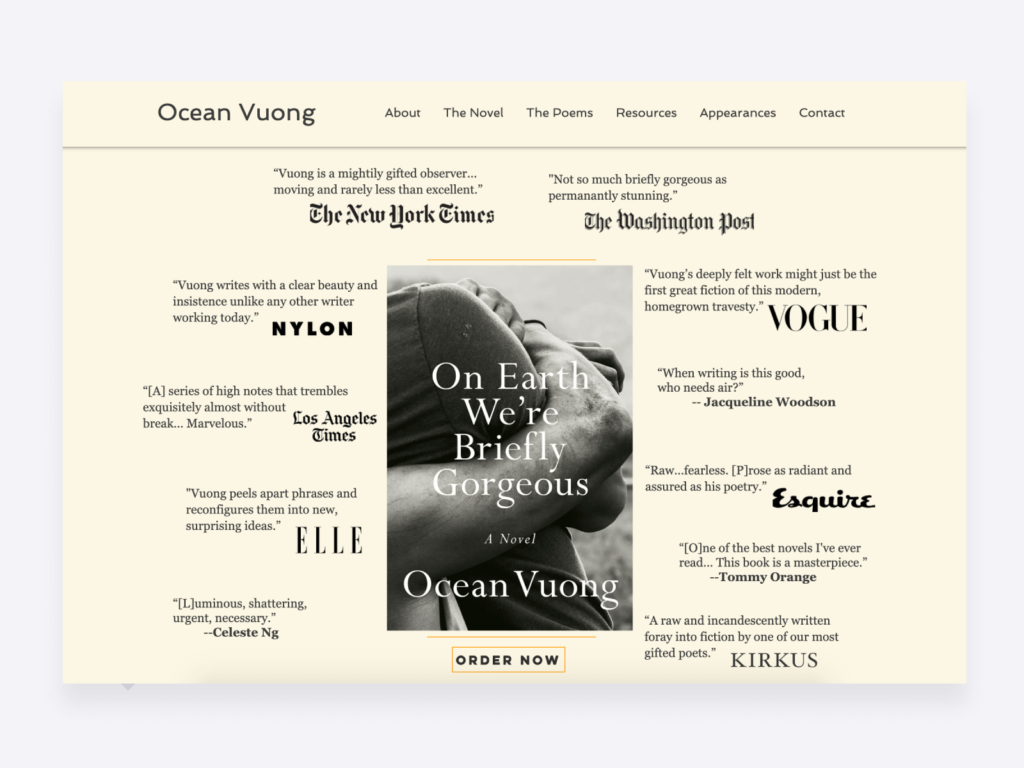
Bethan Woollvin
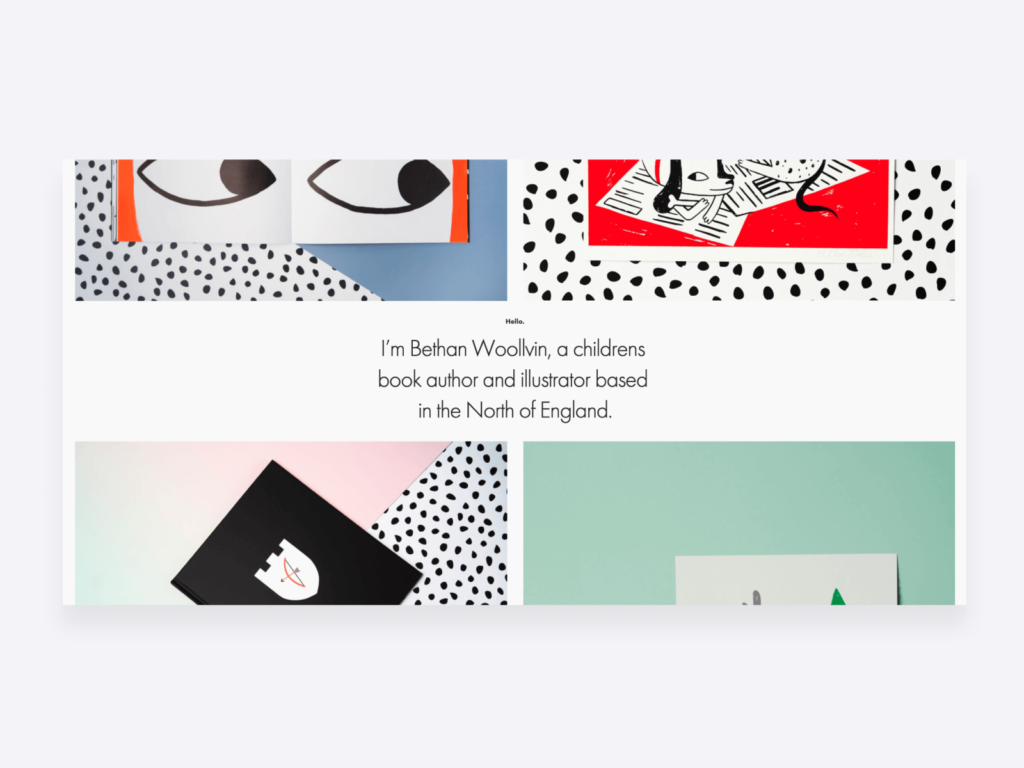
Morgan Parker
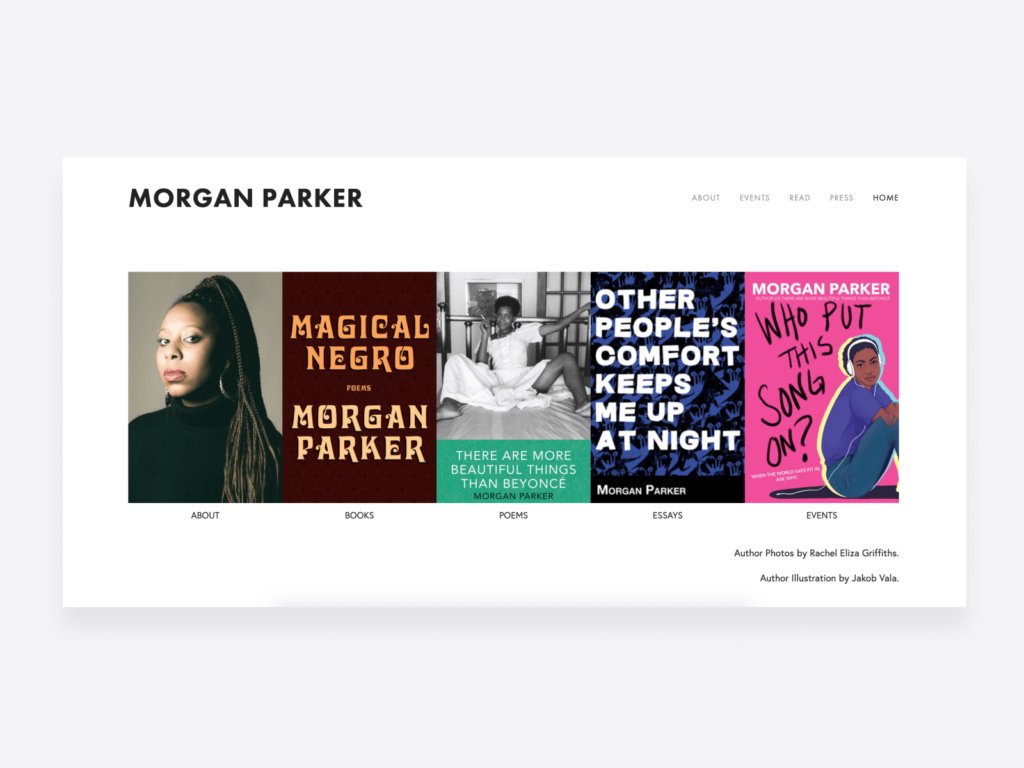
Kai Davis
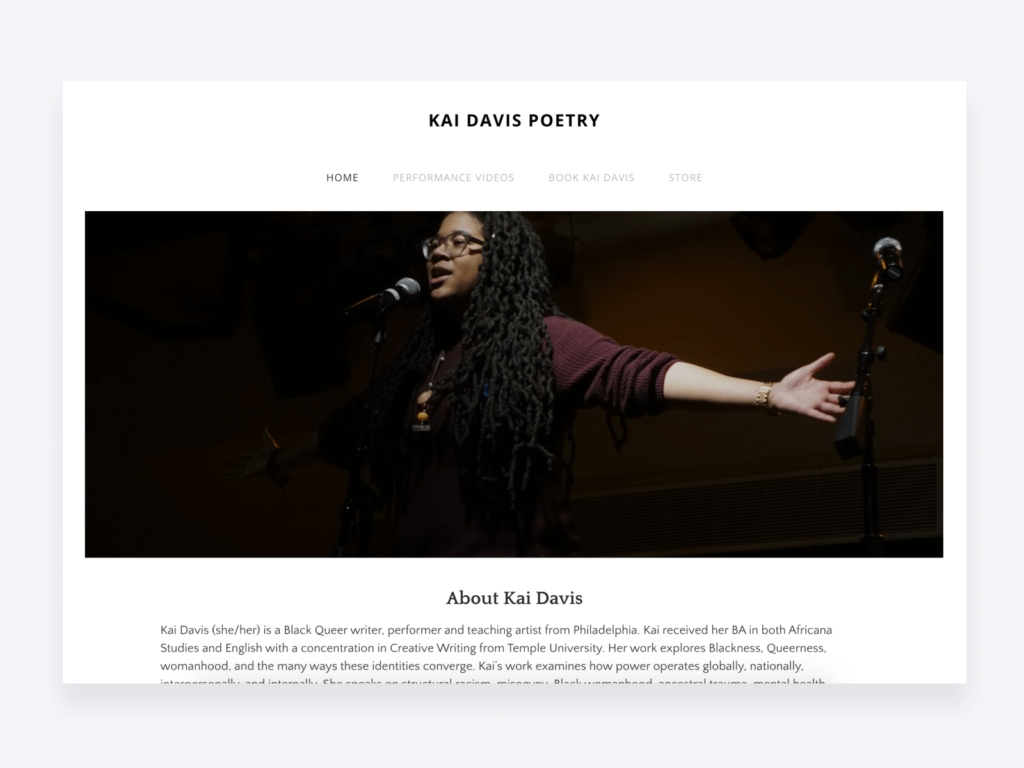
Isaac Garza
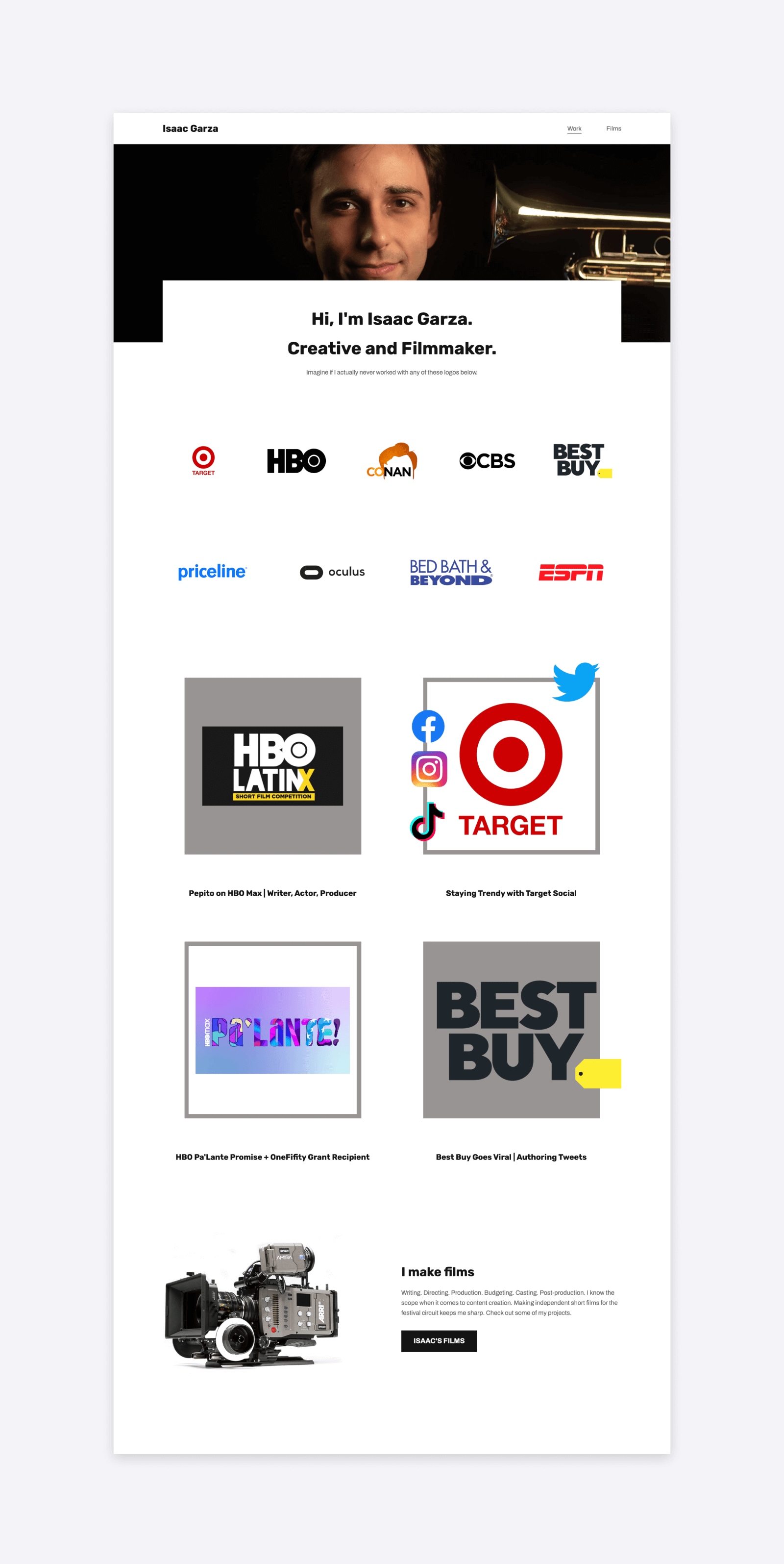
Isaac created his portfolio with Copyfolio, using the "Billboard" template
Want to see more? Check out our article all about creative writing portfolio examples!
